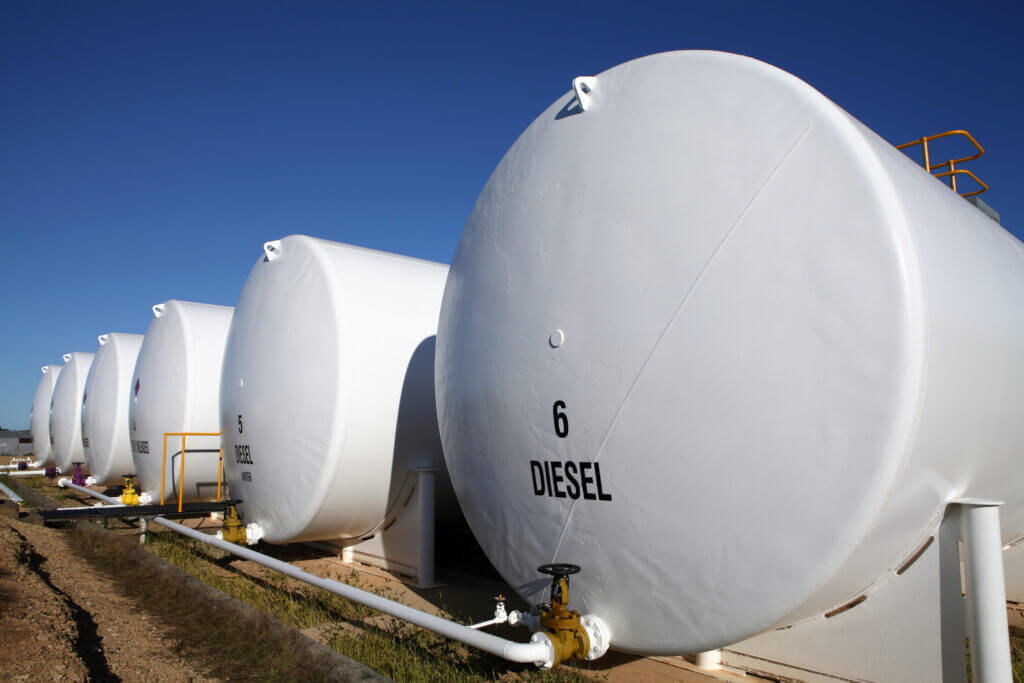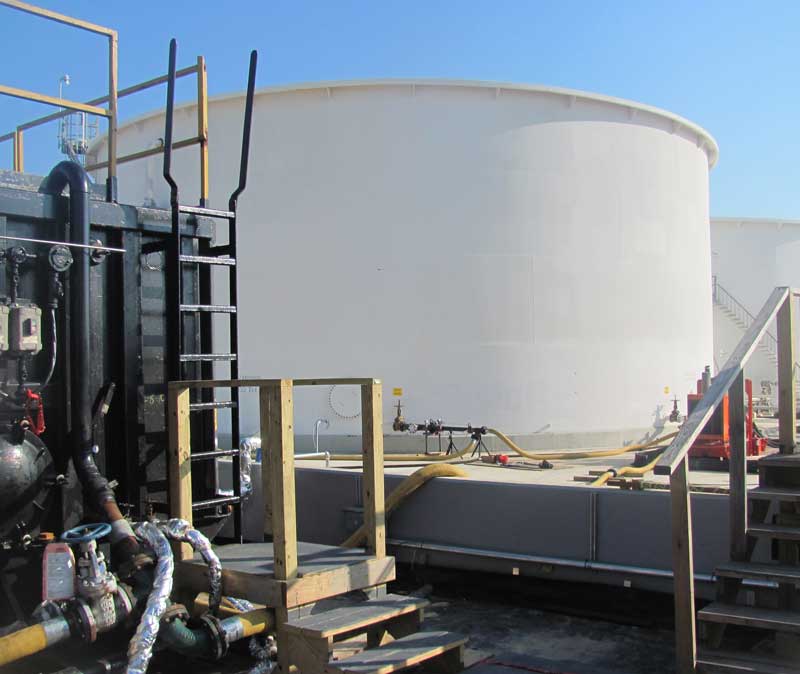Contact Us
Unit 8, South Staffs Terminal
Unit 8, South Staffs Terminal
Home » Diesel Fuel Tank Cleaning Service
24/7 EMERGENCY DELIVERY
Same Day or Next Day
SIMPLE & EASY ORDERING
Secure Guarantee.
Nationwide Delivery
National Delivery.
Fuel tanks are a vital part of the fuel supply system in the petroleum industry. They work as ideal containers to store liquid fuel, keeping it safe, transportable and clean, and ensuring a continuous supply at commercial and industrial sites.
Nevertheless, fuel tanks need regular cleaning to remove built-up sludge, avoid fuel contamination, and minimise the chances of tank corrosion. If their cleanliness is not ensured regularly, it can lead to oil contamination and leakages and ruin the company’s reputation.
To cater to these issues, we at 123 Oil promise standard cleaning services for commercial fuel tanks. We guarantee well-maintained, immaculate fuel tanks for quality fuel supply.
Certain factors of natural and chemical origin cause fuel contamination in the fuel tank.
Diesel fuel is hygroscopic and readily absorbs moisture from the air, leading to water contamination. This can cause corrosion and promote microbial growth, especially in steel components.
With time, microbes occurring naturally in the fuel tank survive on water and hydrocarbon content present in the fuel, forming a layer of debris that sticks to the walls of the container, whereas adding fresh fuel accelerates this microbial growth. Growths that separate from the sidewalls float freely in the fuel and unexpectedly choke fuel lines or filters.
These are natural phenomena through which diesel molecules react to form varnishes and insoluble gums. Later on, these particles settle down to form sludge in the tank.
The by-pass fuel, a specific portion used to lubricate and cool critical components in diesel engines, is sent back to the day tank or main tank as heat de-generated fuel. This warmer fuel can cause condensation inside storage tanks, compromising the fuel’s integrity.
When tank fuel levels are low, the powerful pumps of refuelling trucks can stir up existing contamination (such as water and diesel sludge), rapidly contaminating the fresh fuel.
During each delivery, fuel can exchange hands several times, increasing the risk of contamination from various sources. These sources include unclean transportation, temporary storage tanks, and different types of water contamination.
Sludge Build-Up: Water content present in the fuel facilitates microbial growth. These microbes settle in the fuel tank and combine with dust and tank rust to form sludge build-up.
Particulate Matter: Airborne particles like dust and pollens get mixed with the fuel from air vents and rust particles in fuel tanks. These particles clog fuel filters and engine piping and reduce its efficiency.
Diesel Bug: Diesel, being hygroscopic, attracts water that stimulates microbial growth within the fuel tank. These microbes, fungi, algae, and bacteria are called diesel bugs that divide quickly, doubling their amount within 20 minutes. Hence, a thick layer of diesel bug develops in the tank and engine, reducing engine efficiency, blocking pipes and corroding the tank’s surface.
Water Contamination: Water being denser than diesel sinks in the tank, leading to microbes forming a thick layer in the tank. Additionally, water develops corrosion in the tank, deteriorating its internal surface.
Each kind of contamination badly affects the fuel quality and tank life; therefore, hiring expert fuel tank cleaning services is vital to avoid a significant loss.

There are several methods for cleaning fuel tanks, depending on the contamination level and the tank size.
Manual Cleaning: This involves draining the fuel tank and physically scrubbing the inside of the tank with a brush or sponge. The debris and sludge are removed, and the tank is rinsed with a cleaning solution.
Chemical Cleaning: Chemical cleaning begins with adding a fuel tank cleaner to the tank and letting it sit for some time. The cleaner is then drained along with the debris and sludge. This method is effective for light to moderate contamination.
High-Pressure Cleaning: A high-pressure water or steam jet removes the debris and sludge from the tank.
Vacuum Cleaning: This involves using a vacuum truck to suck out the debris and sludge from the fuel tank.
Ultrasonic Cleaning: It uses ultrasonic waves to create high-frequency pressure waves that agitate and remove the debris and sludge from the tank.
It is a non-destructive and effective method to detect any crack, weak tank surface, or leaks in the fuel storage tank. The technique works by emitting high-frequency ultrasound waves through the tank, which are then reflected and analysed to determine the presence of any abnormalities, such as corrosion or cracks.
Residue or Sludge Remaining in the Tank: If the cleaning is not thorough, some residue or sludge may remain in the tank. This can lead to fuel lines, filters, and injectors getting clogged and the engine getting damaged.
Damage to the Tank: The cleaning process may damage the tank’s interior or exterior, leading to corrosion or structural damage. This can result in leaks, contamination, and further maintenance issues.
Contamination from Cleaning Materials: If the cleaning materials or equipment were not adequately cleaned or handled, they could contaminate the tank with foreign particles, chemicals, or bacteria.
Improper Disposal of Waste Materials: The waste materials generated during the cleaning process, such as sludge or cleaning solutions, must be disposed of properly to prevent environmental damage. Improper disposal can result in fines, legal issues, and negative public perception.
123 Oil is well-trained, licensed and experienced, offering quality services in compliance with environmental safety protocols to provide you with a clean fuel tank for safe oil storage and enhanced tank life.
When it comes to diesel fuel tank cleaning, we offer exclusive services for all types of tanks. Our skilled technicians can clean the following:

With time, fuel tanks develop sludge that contaminates the fuel, blocking fuel passage in a container. To eliminate these problems, you need a fuel tank cleaning service.
Rusting and corrosion are common problems with every tank that can cause significant leakage during transportation and reduced tank life.
Moisture in diesel tanks encourages microbial growth, and microbes diminish the oil quality by damaging its composition. With proper diesel fuel tank cleaning services from 123 Oil, you can avoid it.
123 Oil is ready to be at your doorstep to give you a clean fuel tank without removing it.
Dial up our 24/7 available team, get an instant quote, and we will plan your tank cleaning carefully.
The most common contaminants for diesel fuel are water, microbes, wax, debris and sediments.
Water is the universal contaminant for diesel fuel. Nearly all tanks of diesel fuel that have been stored have water at the bottom for any length of time.
Logically, microbes need water content to thrive; therefore, for the effective removal of algae from a diesel tank, two steps should be taken:
Cleaning a diesel tank without removing it is a step-wise procedure:
Firstly, drain the tank and remove it. Then, clean the tank using hot water and a good detergent. Remove all the debris, dry it with compressed air, and add antifreeze/water remover to absorb any remaining moisture. Now, let the tank dry completely before using it.

Trustindex verifies that the original source of the review is Google. We needed an emergency oil delivery and Nick was incredibly helpful to get it sorted for us. Where other oil companies let us down, 123oil did not. Will definitely use them again.Estie Lippiatt2024-03-27Trustindex verifies that the original source of the review is Google. Absolutely excellent service. We got an Emergency oil delivery within 2 hours. Matthew went out of his way to help us out.Village Hall Admin2024-02-18Trustindex verifies that the original source of the review is Google. Brilliant old school company that do exactly what they say they are going to do.Such a pleasure to buy from order to delivery great people 5 stars then add someKeith Smith2024-01-26Trustindex verifies that the original source of the review is Google. Great service when I needed an emergency refill on a public holiday. They sorted me out.Jonnie Hughes2024-01-24Trustindex verifies that the original source of the review is Google. Matthew was great when mum ran out of oil. Here within 24 hours and brought a great attitude to the job. Give them 10 stars if I could 👍John Bowler2024-01-21Trustindex verifies that the original source of the review is Google. Phoned up Saturday for delivery and delivered Sunday morning, couldn't complain at price, brilliant service and excellent delivery driver. Couldn't do more to help. Would highly recommend.Dave2024-01-21Trustindex verifies that the original source of the review is Google. Never let me down these guys great customer service as always.Andy T2024-01-14Trustindex verifies that the original source of the review is Google. Responded within 24 hours with an emergency delivery. Ensured boiler started up again. Great servicematt rob2024-01-07Trustindex verifies that the original source of the review is Google. Great super fast service, Matthew was very helpful and went out of his way to not only get me oil, but make sure my heating was working again. Thank youNeil Mitchell2024-01-06Trustindex verifies that the original source of the review is Google. Great service as always.Chester Automatics2023-11-16
Copyright© 2025 | 123 Oil Limited | All Rights Reserved |
Created & SEO By 